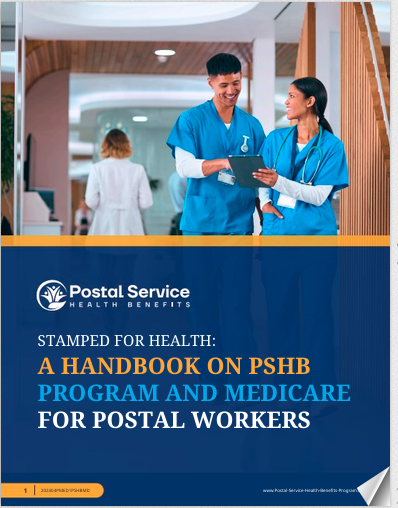Key Takeaways
-
In 2025, the PSHB Program significantly enhances prescription drug coverage for USPS employees and retirees, offering expanded benefits, greater savings, and broader access to pharmacies.
-
Integration with Medicare Part D EGWP ensures you receive comprehensive coverage with lower out-of-pocket costs and safeguards against high prescription drug expenses.
Understanding the Shift in Prescription Drug Benefits
The Postal Service Health Benefits (PSHB) Program, now active in 2025, replaces the Federal Employees Health Benefits (FEHB) Program for USPS employees, annuitants, and their eligible family members. This change introduces a more tailored healthcare experience—and one area seeing meaningful improvement is prescription drug coverage.
For many, managing long-term prescriptions and accessing necessary medications is a key concern. The PSHB program addresses this with upgraded features designed specifically with postal workers and retirees in mind.
How PSHB Prescription Coverage Works in 2025
If you are a Medicare-eligible USPS annuitant or family member, you are automatically enrolled in a Medicare Part D Employer Group Waiver Plan (EGWP) through your PSHB plan—unless you opt out. This integrated approach simplifies your coverage while expanding the range of available benefits.
What This Means for You:
-
Simplified Enrollment: No separate enrollment is required for Medicare Part D if you stay enrolled in a PSHB plan.
-
Automatic Coordination: Your prescription drug benefits under PSHB work seamlessly with your Medicare benefits.
-
Broader Network: You can access a large national network of pharmacies, including local and mail-order options.
Improved Benefits That Matter
Prescription drug coverage under PSHB in 2025 includes features designed to improve affordability, predictability, and access:
1. A Cap on Out-of-Pocket Drug Costs
Under the integrated Medicare Part D structure, there is now a $2,000 annual cap on your out-of-pocket costs for covered prescription drugs. This cap shields you from unexpected high drug bills and begins once your personal costs hit the threshold.
2. The Medicare Prescription Payment Plan
Starting in 2025, you also have access to a new monthly payment option for out-of-pocket drug expenses. Instead of paying large sums all at once at the pharmacy counter, your costs can be spread out evenly across the year. This helps with budgeting and reduces financial strain.
3. Affordable Insulin and Critical Medications
Thanks to provisions tied to the Medicare EGWP model, your insulin is capped at $35 per month. Other high-use drugs may also have negotiated rates or special tiers, further lowering your costs.
4. Coverage Across All Phases
You now move through three cost phases for prescription drugs:
-
Deductible phase (you pay 100% up to the deductible)
-
Initial coverage phase (your plan shares the cost)
-
Catastrophic phase (once your out-of-pocket hits $2,000, the plan pays 100%)
This structure makes your coverage more protective the more you spend, offering a clear ceiling on financial exposure.
Eligibility and Requirements
Your eligibility for these enhanced prescription drug benefits depends on your status within the USPS workforce or retiree population.
If You’re a USPS Retiree:
-
If you retired on or before January 1, 2025, and are Medicare-eligible but not enrolled in Part B, you are exempt from mandatory Medicare Part B enrollment for PSHB.
-
If you retired after January 1, 2025, and are Medicare-eligible, you must enroll in Medicare Part B to maintain full PSHB benefits, including integrated drug coverage.
If You’re an Active Employee:
-
You’ll stay on PSHB without Medicare integration until retirement.
-
Once retired and Medicare-eligible, your PSHB plan will integrate with Medicare, including the EGWP drug component.
Access and Pharmacy Networks
You no longer have to worry about whether your pharmacy is covered. PSHB plans with Medicare drug integration offer:
-
Nationwide retail pharmacy access
-
Mail-order pharmacy options for home delivery
-
Preferred pharmacy networks for even lower copays
This flexibility ensures you can get your medications whether you’re at home or traveling, which is a key advantage for retirees and postal workers with dynamic schedules.
Coordination with Other Federal Benefits
While the PSHB prescription drug changes are significant, they do not affect your eligibility for:
-
FEDVIP (dental and vision plans)
-
FEGLI (Federal Employees’ Group Life Insurance)
-
FLTCIP (Federal Long Term Care Insurance Program)
-
FSAFEDS (Flexible Spending Accounts for eligible employees)
These programs operate independently, and your enrollment in a PSHB plan will not jeopardize them. However, if you opt out of the Medicare-integrated drug coverage under PSHB, you will lose your drug benefits and may only re-enroll during limited opportunities.
Important Timelines and Deadlines
Here’s what you need to know about key enrollment and coverage dates:
-
Special Enrollment Period (SEP): For Medicare Part B, a one-time SEP was offered from April 1 to September 30, 2024. If you missed this and are required to enroll, penalties may now apply.
-
Open Season: Last occurred from November to December 2024, allowing employees and annuitants to choose a PSHB plan. The next Open Season will offer another chance to change plans if needed.
-
Plan Changes Take Effect: All changes you made during Open Season took effect January 1, 2025.
Make sure to review future Open Season announcements so you can adjust your plan based on your evolving healthcare needs.
What Happens If You Opt Out of Medicare Part D EGWP?
If you opt out of the Medicare Part D component offered through your PSHB plan:
-
You will lose prescription drug coverage under PSHB.
-
You may not be allowed to re-enroll unless a specific life event qualifies you for a Special Enrollment Period.
-
You may face late enrollment penalties if you attempt to get Part D coverage later through another source.
The default enrollment structure is built to protect you from high drug costs and simplify your benefits. Unless you have a specific reason to decline, staying enrolled ensures maximum coverage.
Drug Formularies and Tiering
PSHB plans generally follow a tiered drug formulary, which means:
-
Generic medications have the lowest out-of-pocket cost
-
Preferred brand-name drugs cost more but are still covered at favorable rates
-
Non-preferred drugs may cost significantly more and could require prior authorization
Each plan publishes its own formulary. Be sure to review it each year during Open Season to confirm your medications are still covered and to avoid surprises at the pharmacy counter.
How to Make the Most of Your Coverage
To get the best value from your PSHB prescription drug plan:
-
Use mail-order options for long-term maintenance medications
-
Check for preferred pharmacy networks to get the lowest copays
-
Review your plan’s formulary before refilling prescriptions each year
-
Ask your provider if a generic or lower-tier option is available
-
Monitor your out-of-pocket costs so you’re aware of when you reach the $2,000 cap
These small actions can help reduce your expenses while ensuring you stay within your plan’s covered benefits.
Making Prescription Drug Coverage Work for You
Prescription drug coverage under PSHB in 2025 is designed with your real needs in mind. Whether you’re filling occasional prescriptions or managing a chronic condition, the new structure gives you better financial protection, broader access, and more predictable costs.
The integration with Medicare Part D EGWP and the new cost-saving features—like the $2,000 cap and monthly payment option—mean that you don’t have to compromise on care.
If you’re unsure about your options or how these changes apply to you, speak with a licensed agent listed on this website for expert guidance tailored to your specific situation.







